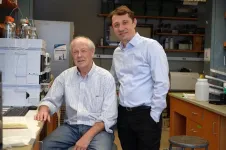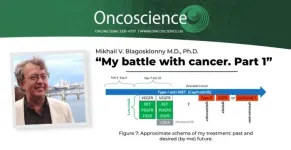(Press-News.org) Precarious employment, defined by temporary contracts, unstable employment, or job insecurity, is increasingly common and is associated with inconsistent access to health insurance, lower incomes, and greater exposure to physical hazards and psychological stress. A team of researchers in Toronto, Canada, created and tested a new three-question screening tool to help primary care clinics identify these patients. The screener included the following three questions: 1) non-standard employment (Are you currently employed in a casual, short-term, or temporary position?); 2) violations of occupational health and safety rights and protections (Do you feel fearful that you could be fired if you raised employment concerns?); and 3) income variability (Does your pay vary a lot from month to month?).
To test the validity of their screening tool and assess the feasibility of adding these questions to social determinant screening, the research team recruited a convenience sample of 200 people in waiting rooms at seven Toronto clinics in areas with higher poverty rates than the rest of the city. Participants ranged in age from 18 to 72 years (mean 38), fluency in English, and employed, with 93 (45.6%) identifying as men and 119 (58.3%) identifying as White. Participants also completed the Poverty and Employment Precarity in Southern Ontario (PEPSO) Employment Precarity Index. The PEPSO Index uses a score ranging from 0 to 100 to categorize work status along a gradient (secure, stable, vulnerable, and precarious). A score of 38 or above suggests a precarious employment status. Those who answered yes to at least two of the questions on the researchers’ survey were almost four times more likely to be precariously employed based on their PEPSO scores.
What We Know: Employment is a key social determinant of health, with a significant impact on one’s income, access to basic necessities, and social connectedness. While primary care physicians screen for other social determinants of health, they do not ask about employment concerns. People with chronic health issues are at greater risk of experiencing precarious employment and may face difficulty re-entering the workforce if unemployed. While it is especially important to screen for precarious employment in primary care settings, there exists no standard screening tool at this time.
What This Study Adds: The results of this study suggest that a simple three-question screener could help identify precarious employment among primary care patients and serve as an opening for conversations in clinical settings about employment precarity and work conditions. Implementation of this screener in primary care settings could improve how resources are targeted for managing care and how patients are connected with relevant support services; regional pooling of data collected in this way could spark policy changes on a broader scale to reduce precarious employment. The researchers note that clinicians may need direction in how and when to intervene based on their patients’ responses to the screening questions, and that clinical time constraints may make it difficult to obtain more detailed information.
A Brief Tool to Screen Patients for Precarious Employment: A Validation Study
Andrew D. Pinto, MD, CCFP, FRCPC, MSc, et al.
Upstream Lab, MAP/Centre for Urban Health Solutions, Li Ka Shing Knowledge Institute, Unity Health Toronto, Toronto, Ontario, Canada
Dalla Lana School of Public Health, University of Toronto, Toronto, Ontario, Canada
Interdisciplinary Health Program, St. Francis Xavier University, Antigonish, Nova Scotia, Canada
Department of Family and Community Medicine, St. Michael’s Hospital, Unity Health Toronto, Toronto, Ontario, Canada
Department of Family and Community Medicine, Faculty of Medicine, University of Toronto, Toronto, Ontario, Canada
PRE-EMBARGO LINK (Link expires at 5 p.m. EDT Jan. 22, 2024)
PERMANENT LIN
END
A simple three-question screening tool may help to identify precarious employment among primary care patients
Precarious employment, defined by temporary contracts, unstable employment, or job insecurity, is increasingly common and is associated with inconsistent access to health insurance, lower incomes, and greater exposure to physical hazards and psychological
2024-01-22
ELSE PRESS RELEASES FROM THIS DATE:
Primary care physicians and urologists work together to provide optimal care for men with low-risk prostate cancer
2024-01-22
This study considers the perspectives of primary care physicians (PCPs) and urologists on what facilitates and what creates barriers to active surveillance (AS) care for men with low-risk prostate cancer. Researchers conducted in-depth, semi-structured interviews with 19 PCPs (9 female, 4 in community practices, 15 in academic medical centers) and 15 urologists (3 female, 5 in private practice, 3 in academic medical centers) between June 2020 and March 2021. Their goal was to assess interviewees’ knowledge of AS, what factors they felt influence adherence to follow-up ...
Patients who obtained telemedicine medication abortions (TeleMAB) through primary care have positive feelings about their experience
2024-01-22
This study explores patients’ experiences and perspectives on obtaining telemedicine medication abortions (TeleMAB) through their primary care health system. Researchers conducted in-depth phone interviews with 14 English, Spanish, and/or Portuguese-speaking patients, ranging in age from 26 to 42, who received a TeleMAB between July 2020 and December 2021 from a large primary care safety-net community health system in Massachusetts. Thirteen of the interviewees provided demographic information. All 13 identified as female, and 10 had children ...
An update on a 2015 report shows that gabapentinoid usage in the U.S. has continued to climb
2024-01-22
Gabapentinoids are commonly prescribed for an array of off-label conditions, including management of chronic pain. Updating their 2015 report on gabapentinoid usage in the U.S., researchers used the 2002–2021 Medical Expenditure Panel Survey (MEPS) to investigate the proportion of the adult population using gabapentinoids, medications, and diagnoses associated with users, and the likelihood of starting, stopping, or continuing gabapentinoids. They found that gabapentinoid use has increased from 4.0% in 2015 to 4.7% in 2021. ...
The serious risks and high costs of monoclonal antibodies may outweigh the benefits for patients with Alzheimer dementia
2024-01-22
Researchers performed a meta-analysis of randomized trial studies that compared the use of amyloid-reducing monoclonal antibodies (MABs) in patients with Alzheimer dementia at a dose consistent with that used in Phase 3 or FDA approval trials with the use of a placebo. Their purpose was to evaluate clinically meaningful benefits and harms of MABs to these patients. For inclusion in this meta-analysis, the RCT studies had to include adult participants with cognitive impairment or Alzheimer disease of any severity and report at least one clinically relevant benefit or harm to participants after at least one year. The research team identified 19 such publications that evaluated ...
Annals of Family Medicine January/February 2024 Tip Sheet
2024-01-22
EHR Workload Continues to Grow for Primary Care Physicians
The study evaluated recent trends in primary care physicians’ (PCPs) electronic health record (EHR) workload. Prior to and early in the COVID-19 pandemic, PCPs spent more time in the EHR and received more messages than physicians in other specialties, but it is unclear if the pandemic further accelerated the growth of PCPs’ EHR workload. Researchers observed EHR usage of 141 academic PCPs practicing family medicine, internal medicine, and general pediatrics within the University of Wisconsin-Madison health system, which ...
A quality improvement intervention links high-risk prenatal patients at safety-net health centers with primary care
2024-01-22
Researchers assessed the development and implementation of a quality improvement learning collaborative’s (QILC) intervention to link high-risk prenatal patients with primary care. The aims of the study were twofold: to identify any quantitative impact of the intervention on postpartum and primary care utilization for high-risk prenatal patients and to explore the Federally Qualified Health Center (FQHC) participants’ experiences of working with a QI collaborative.
Using information from patients’ charts and/or ...
A new drug candidate can shrink kidney cysts
2024-01-22
Autosomal dominant polycystic kidney disease (ADPKD), the most common form of polycystic kidney disease, can lead to kidney enlargement and eventual loss of function. The disease affects more than 12 million people worldwide, and many patients end up needing dialysis or a kidney transplant by the time they reach their 60s.
Researchers at MIT and Yale University School of Medicine have now found that a compound originally developed as a potential cancer treatment holds promise for treating ADPKD. The drug works by exploiting kidney cyst cells’ vulnerability to oxidative stress — a state ...
Bone marrow adipocytes provide early sign of progression from MGUS to multiple myeloma
2024-01-22
A new research perspective was published in Oncotarget's Volume 15 on January 16, 2024, entitled, “Bone marrow adipocytes provide early sign for progression from MGUS to multiple myeloma.”
Multiple Myeloma (MM) is the second most common hematological malignancy and is characterized by clonal expansion of malignant plasma cells in the bone marrow. In spite of recent advances in the field of MM, the disease has remained incurable. MM is preceded by a premalignant state known as monoclonal gammopathy of undetermined significance (MGUS), with a risk of progression to MM of 1% per year. Establishing a scalable approach that refines ...
Dr. Blagosklonny’s battle with cancer (Part 1)
2024-01-22
On January 3, 2024, Mikhail V. Blagosklonny M.D., Ph.D., from Roswell Park Comprehensive Cancer Center published a new brief report in Oncoscience (Volume 11), entitled, “My battle with cancer. Part 1.”
“In January 2023, diagnosed with numerous metastases of lung cancer in my brain, I felt that I must accomplish a mission. If everything happens for a reason, my cancer, in particular, I must find out how metastatic cancer can be treated with curative intent. This is my mission now, and the reason I was ever born. In January 2023, I understood the meaning of life, of my life. I was born to write this article. In this article, I argue that monotherapy with ...
Don’t blame the sharks: Research led by UMass Amherst reveals why more hooked tarpon are being eaten
2024-01-22
In wave-making research recently published in Marine and Coastal Fisheries, a team of researchers, led by biologists at the University of Massachusetts Amherst, has quantified the rate at which great hammerhead sharks are eating Atlantic tarpon hooked by anglers at Bahia Honda, Florida—one of the prime tarpon fishing spots in the Florida Keys.
Called the “depredation rate,” the team found that 15.3% of tarpon that were hooked by anglers and fought for more than five minutes were eaten while still on the line. But the researchers also show that this is not necessarily a sign that the ecosystem is out of balance. To the contrary, increased reports ...
LAST 30 PRESS RELEASES:
Injectable breast ‘implant’ offers alternative to traditional surgeries
Neuroscientists devise formulas to measure multilingualism
New prostate cancer trial seeks to reduce toxicity without sacrificing efficacy
Geometry shapes life
A CRISPR screen reveals many previously unrecognized genes required for brain development and a new neurodevelopmental disorder
Hot flush treatment has anti-breast cancer activity, study finds
Securing AI systems against growing cybersecurity threats
Longest observation of an active solar region
Why nail-biting, procrastination and other self-sabotaging behaviors are rooted in survival instincts
Regional variations in mechanical properties of porcine leptomeninges
Artificial empathy in therapy and healthcare: advancements in interpersonal interaction technologies
Why some brains switch gears more efficiently than others
UVA’s Jundong Li wins ICDM’S 2025 Tao Li Award for data mining, machine learning
UVA’s low-power, high-performance computer power player Mircea Stan earns National Academy of Inventors fellowship
Not playing by the rules: USU researcher explores filamentous algae dynamics in rivers
Do our body clocks influence our risk of dementia?
Anthropologists offer new evidence of bipedalism in long-debated fossil discovery
Safer receipt paper from wood
Dosage-sensitive genes suggest no whole-genome duplications in ancestral angiosperm
First ancient human herpesvirus genomes document their deep history with humans
Why Some Bacteria Survive Antibiotics and How to Stop Them - New study reveals that bacteria can survive antibiotic treatment through two fundamentally different “shutdown modes”
UCLA study links scar healing to dangerous placenta condition
CHANGE-seq-BE finds off-target changes in the genome from base editors
The Journal of Nuclear Medicine Ahead-of-Print Tip Sheet: January 2, 2026
Delayed or absent first dose of measles, mumps, and rubella vaccination
Trends in US preterm birth rates by household income and race and ethnicity
Study identifies potential biomarker linked to progression and brain inflammation in multiple sclerosis
Many mothers in Norway do not show up for postnatal check-ups
Researchers want to find out why quick clay is so unstable
Superradiant spins show teamwork at the quantum scale
[Press-News.org] A simple three-question screening tool may help to identify precarious employment among primary care patientsPrecarious employment, defined by temporary contracts, unstable employment, or job insecurity, is increasingly common and is associated with inconsistent access to health insurance, lower incomes, and greater exposure to physical hazards and psychological



